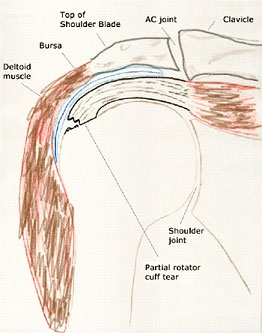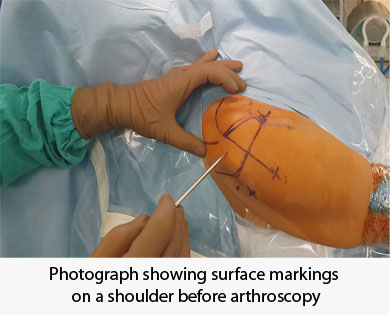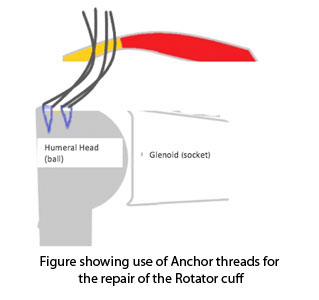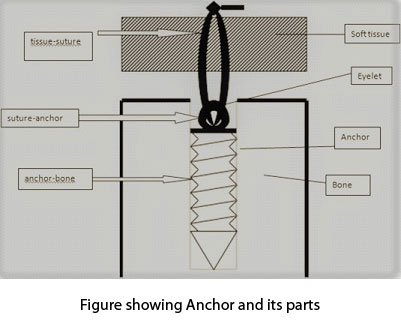

Rotator cuff is a tendon formed with four major muscles which are supraspinatous Infraspinatus Subscapularis and Teres minor. Each muscle of the Rotator cuff has specific function. The muscles of the rotator cuff not only help in moving the shoulder joint but are also majorly involved in giving stability to the shoulder joint. Since Shoulder is a ball and socket joint its mobility depends on the function and integrity of the rotator cuff. The rotator cuff has a wide attachment on the part of the head of the humerus called as the greater tuberosity and the lesser tuberosity. Most of the lesions of the rotator cuff are found at the level of the insertion of these tendons.
The area of attachment of the rotator cuff to the humerus is prone to develop degenerative changes with age. The rotator cuff muscle in the age group of less than 40 years is a very strong structure and hence is less problematic. But with age after 60years many have degenerative tears but not all are symptomatic.

Rotator cuff tears can be degenerative or post-traumatic. The involvement of the rotator cuff as a degenerative tear is usually seen after the age of 60. Earlier involvement is seen in diabetic and hypothyroid patients. Rotator cuff tears are common in the population with age more than 60 but not all of these tears are symptomatic. Such asymptomatic tears don’t require any treatment if detected. Few of these patients may become symptomatic and are seen in the clinic with either the inability to lift the arm above the level of the shoulder, inability to Inability to lift weight or pain as the major factor. Rotator cuff tears may start with pain as the only symptom later and as the tear progresses in size they become more symptomatic with obvious disability seen in day to day life.
Most of the rotator cuff tears with minimal symptoms can be treated conservatively. Physiotherapy helps in strengthening and provides good relief. However some of them may remain still remain symptomatic with the progression of symptoms. When the pain and disability become very obvious these candidates may require arthroscopic Rotator cuff repair.
Arthroscopic management of these rotator cuff tear has become the new gold standard in the treatment of these rotator cuff tears. Rotator cuff tears management has evolved over last few decades and has become progressively better with excellent outcomes due to better Techniques, instrumentation and implants. These days the implants ( Anchors used for repair) used in the rotator cuff tear management are very advanced with most in the field as bio-absorbable. Most of the studies of the rotator cuff tear management in terms of surgical management with arthroscopic repairs have shown excellent to good outcomes. The repair of these tears gives a chance for anatomical restoration but also good outcome as the patient’s quality of life is improved.

Arthroscopic Repair is carried out using small key holes with the help of a scope attached to a camera. Once inside the area of repair is cleaned. The repair is carried out using Anchors with threads which are used to re-attach the rotator cuff to the tuberosity. These threads are then tied over the Rotator cuff with special knots for a secure repair. This is all carried out using small holes.

The Anchors are implants which are used for repairing the torn Rotator cuff to the Tuberosity of the Humerus. Anchors are made of variety of material but broadly can be classified into Metallic and Non-metallic. Metallic anchors are usually of made of Titanium which is inert to the body and MRI compatible should you require one. Non-metallic anchors are made of PEEK ( Poly-ether ether-Ketone) which is a organic colorless thermoplastic polymer or PLGA( Poly lactide co-Glycolide/ Beta-TCP-Tricalcium Phosphate. PEEK anchors are inert and widely used across the world over, while PLGA/ Beta TCP are Bio-absorbable. This Meaning that the anchors is dissolved in the bone over a period of time (2 to 3 years).

The number of anchors used in a repair typically depend on the size of the tear, that is the tears which are large will have to be repaired using more anchors and hence the cost may go higher. Also if the type of repaired carried out by the surgeon is a “Double Row Repair” it will have to be carried out using more anchors than a single Row Repair.
The initial 6 weeks post operation is considered the healing period during which the repair is protected with the use of a sling and few precautions. The repair gains strength after 3months and then continues to do so over a period of time.
Immediately after the repair some of the passive exercises are taught to the patient which help in avoiding stiffness post repair. These exercises are carried out by the patient at home. But the Physiotherapy proper is only started after 6 weeks to 8 weeks post surgery. We have a guided tested post-operative programme for the post-operative patients with the repair of the cuff. This involves guided Theraband sessions for few days (10 – 15 Days) followed by the same exercises with the theraband carried out at home. Intermitently we follow the patient for the constant progess made and intervene in time to time if required for the betterment of the patient.